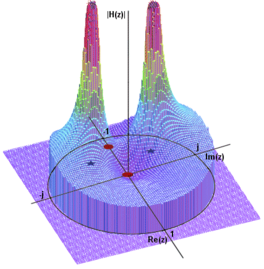Introduction
Signal processing, especially digital signal processing, is an integral part of nearly every electronic equipment. Important applications are medical equipment, communication devices, digital audio and video equipment. In this module the required tools to understand and develop signal processing algorithms are introduced.
Lecture
Students learn the basic mathematical methods to describe linear continuous and time discrete systems. The system description is shown in time, frequency and spatial domain.
- Overview of communications engineering, signal description, transform analysis, sampling theorem
- Time discrete systems and signals, z-Transform, Pole-Zero-Diagram
- Analog filter analysis, Bilinear transform, Design of digital filters
- Spatial signal processing
Hands-on
Based on the lecture you will learn how to use MATLAB to perform signal analysis in time, frequency and space. You will analyze time-discrete linear systems and you will learn how to build filters based on the pole-zero-diagram and a given specification.
Time Table
- Extent: 3 SWS Lecture, 1 SWS Exercise, 2 SWS Hands-On
- Time Table
- Lecture: No Lecture during this Semester
- Exercise: No Exercise during this Semester
- Hands-on: See group assignment list
Literature
- Stearns, S.D., Digitale Verarbeitung analoger Signale, Oldenbourg Verlag, 1999.
- Oppenheim, A.V., Zeitdiskrete Signalverarbeitung, Pearson Studium, 2004.
- Ohm, J.R., Lüke, H.D., Signalübertragung, Springer, 2010.



